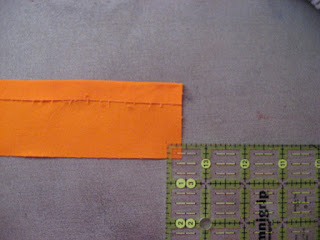A friend and I had the opportunity to visit several of the venues associated with Innovations--A Biennial Textile Event 2011 in St. Louis. The exhibitions in conjunction with Innovations investigate the state of contemporary textile arts. Nineteen nonprofit and private arts organizations join forces to present exhibitions related to fiber art. If you have the opportunity to visit any of these exhibits, by all means go! The exhibits are located all over the city and surrounding areas.
(Many of the galleries did not allow photographs; if photographs were allowed, I'm showing them.)
We started our "tour" with Quilt National at The Foundry in St. Charles, MO. The Quilt National exhibit was fabulous; I thoroughly enjoyed it. The thing that made the biggest impression on me was the number of pieces that were hand quilted or used hand stitching as a part of the design. We actually counted; and of the pieces that were there, a quarter of them had hand stitching. I LOVE hand work, so I REALLY enjoyed this.
We spent one day in St. Louis where we visited several galleries including the Duane Reed Gallery, the Sheldon Art Galleries, the Craft Alliance Delmar Gallery, Art Saint Louis, the Craft Alliance/Grand Center, and The Gallery at the Regional Arts Commission. Each had something unique to offer.
Art Saint Louis has an exhibit called Fiber Focus 2011 that will be available for viewing through October 13, 2011. It features the work of 42 contemporary fiber artists representing eight Midwestern regional states. This exhibit is well worth a visit.
The
Craft Alliance/Grand Center only had one piece of fiber art. The piece, by Guerra De La Paz, is called Follow the Leader. It is made up of discarded clothing piled on top of what looks like legs with various shoes/boots. It was very interesting to see this exhibit. We were told the piece is a political commentary on waste and excess.
The exhibit at
The Gallery at the Regional Arts Commission was much smaller than many of the exhibits but had several pieces I really liked.
Jo Stealey had pieces in the gallery that were made of silk and processed leaves. They were my favorites. If you click on her name (which will take you to her site) and go to her "Nature's Mantle" section, you can see some of the pieces that were in this show. The exhibit at The Gallery is called Textile Variations/New Directions and will be available for viewing until November 6, 20ll.
The
Craft Alliance Delmar Loop didn't have the most extensive exhibit, but their gift shop was VERY nice. (I found several things I thought I "needed." I ended up with a pair of earrings.) Nnenna Okore's exhibit, "Shokolo," relies on the use of flotsam or discarded objects, which are transformed into intricate sculpture and installations through repetitive and labor-intensive techniques. Her processes include weaving, sewing, rolling, twisting, and dyeing. Jim Hay's exhibit is called Angels, People, and SMOKE. His quilts are made from Japanese kimono cloth and cloth he has gathered from surrounding countries. Both exhibits are available through October 23, 2011.
The
Duane Reed Gallery hosts an exhibit called Doll Sense. All of the pieces are woven. The exhibit, though, that I personally LOVED there was
Lanny Bergner's exhibit called Nature's Matrix. Bergner works with mesh (some stainless steel and bronze) along with wire, glass frit, recycled ground plastic, paper, and silicone to create organic sculptural constructions. The pieces are three dimensional and very unique and innovative. Check out his website by clicking on his name. You can see some of the pieces from the exhibit in his gallery there. If I could afford a piece, I would have one! The exhibits there are available through October 15, 2011.
I was allowed to take some pictures at the
Sheldon Art Gallery. Ties That Bind: Art Quilts by Members of the Fiber Artists Coalition is available through December 3, 2011. This exhibition presents a selection of quilted works by members of the Fiber Artists Coalition, in conjunction with the citywide biennial Innovations in Textiles celebration, now in its 9th year. Here is just a small view of what is available to you at the Sheldon.
Shelley Brucar's piece, Stormy, is made of hand-dyed and commercial cottons.
"Michigamee" is made by
Maggie Weiss. It is made of hand-dyed cotton and silks and was collaged and machine quilted with organza batting. Maggie says, "Creating the illusion of three dimensions on a two-dimensonal surface is a continually captivating process, whether using dyes, paints or fabrics." I love the look of light on the water in this piece.
The Sheldon also has a really nice theater that houses various musical events. We got to take a look at that facility, and I found out that it has gorgeous stained-glass windows.
These are some of the large windows.
These are a couple of the small windows. I loved the colors and design.
All in all, it was a great visit to St. Louis. If you love fiber art, you still have a little time to make the trip. Get going!

















































